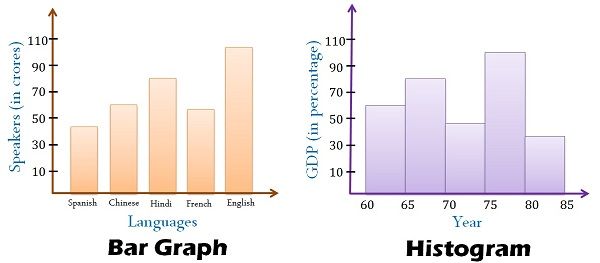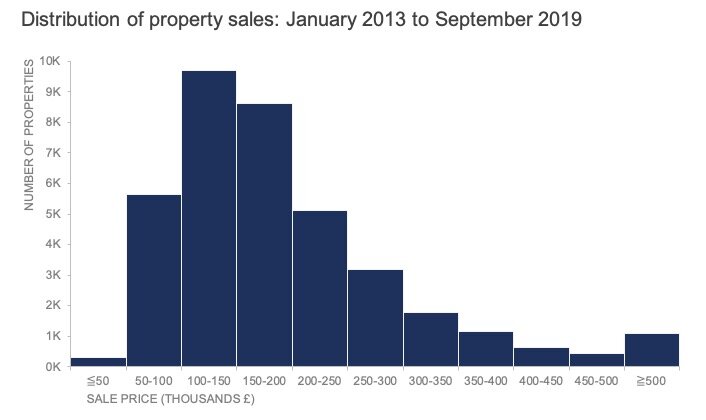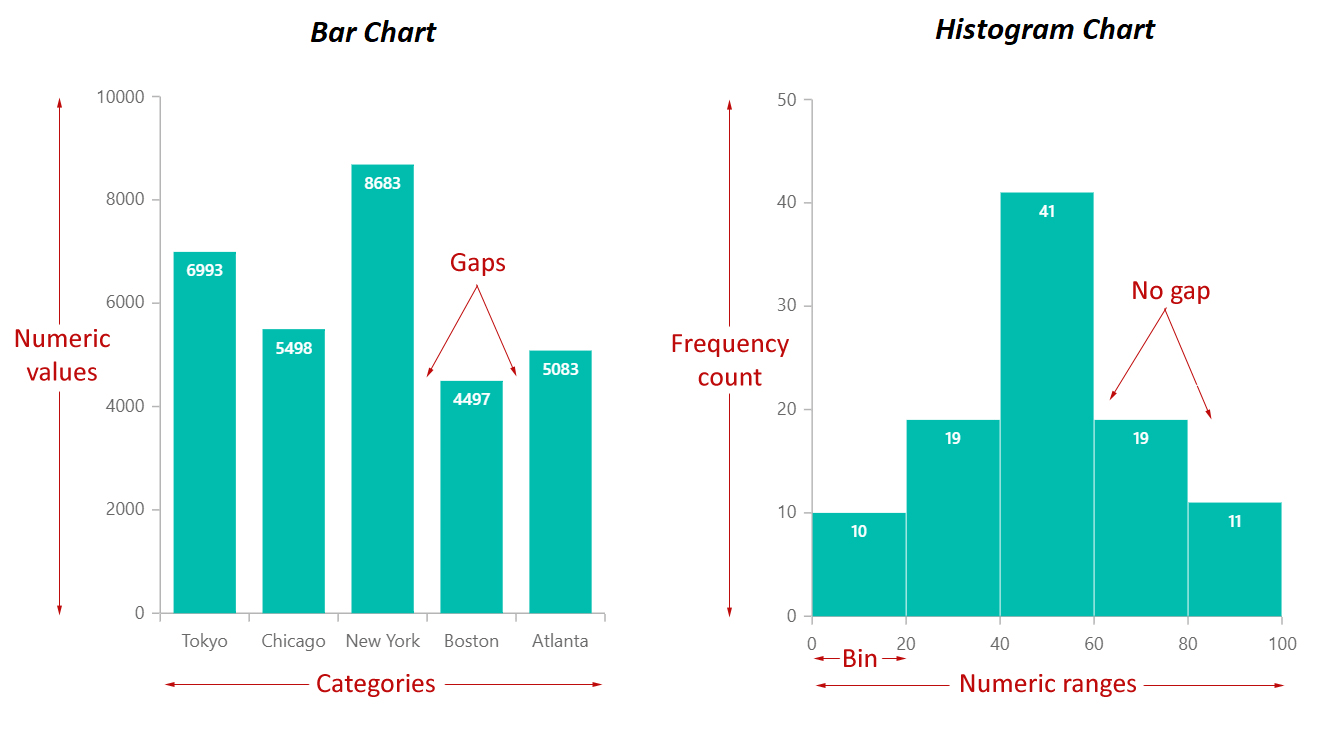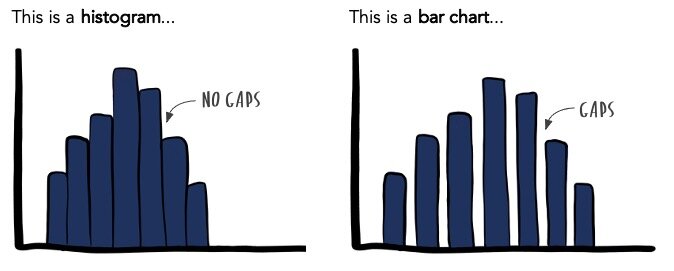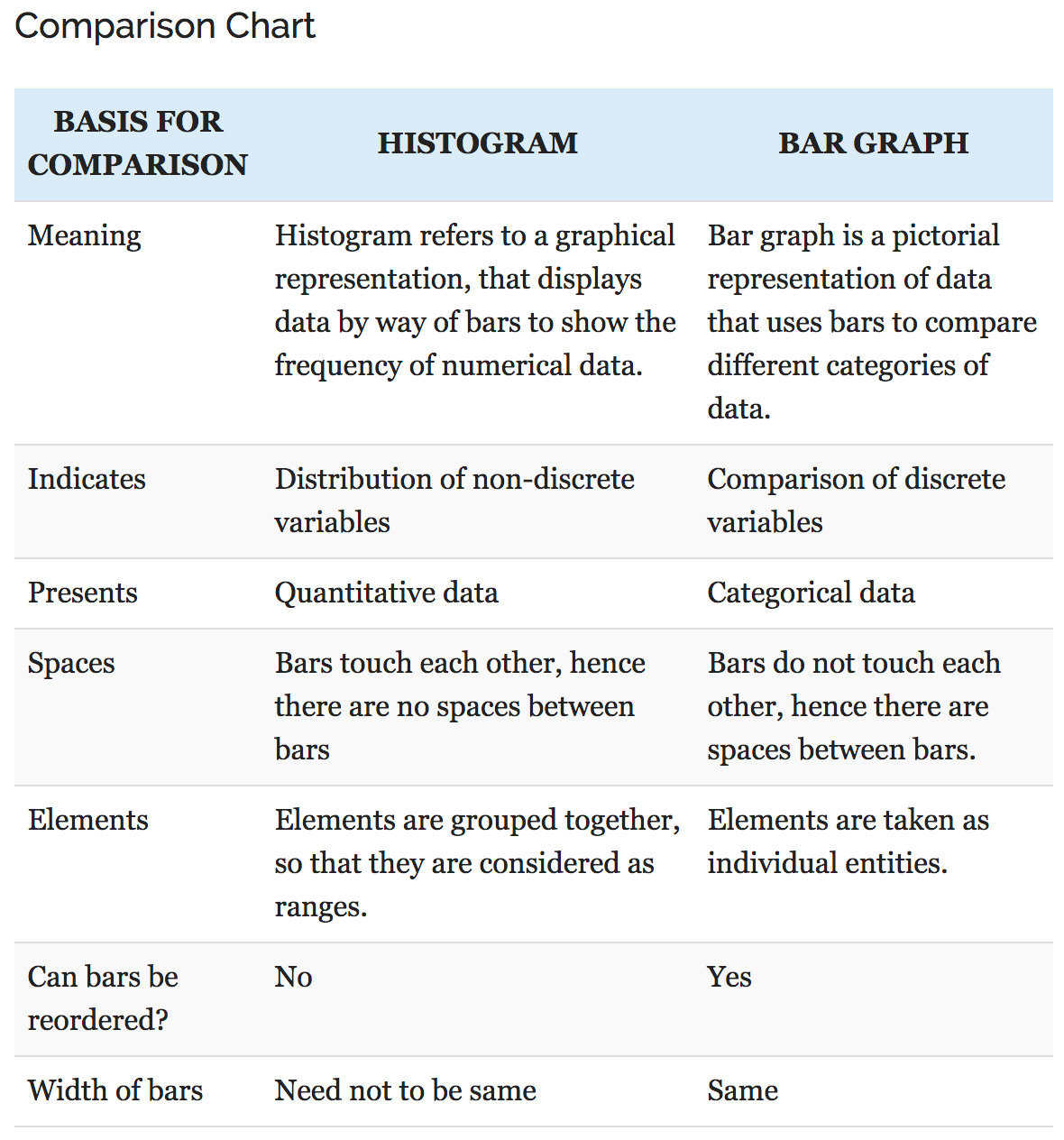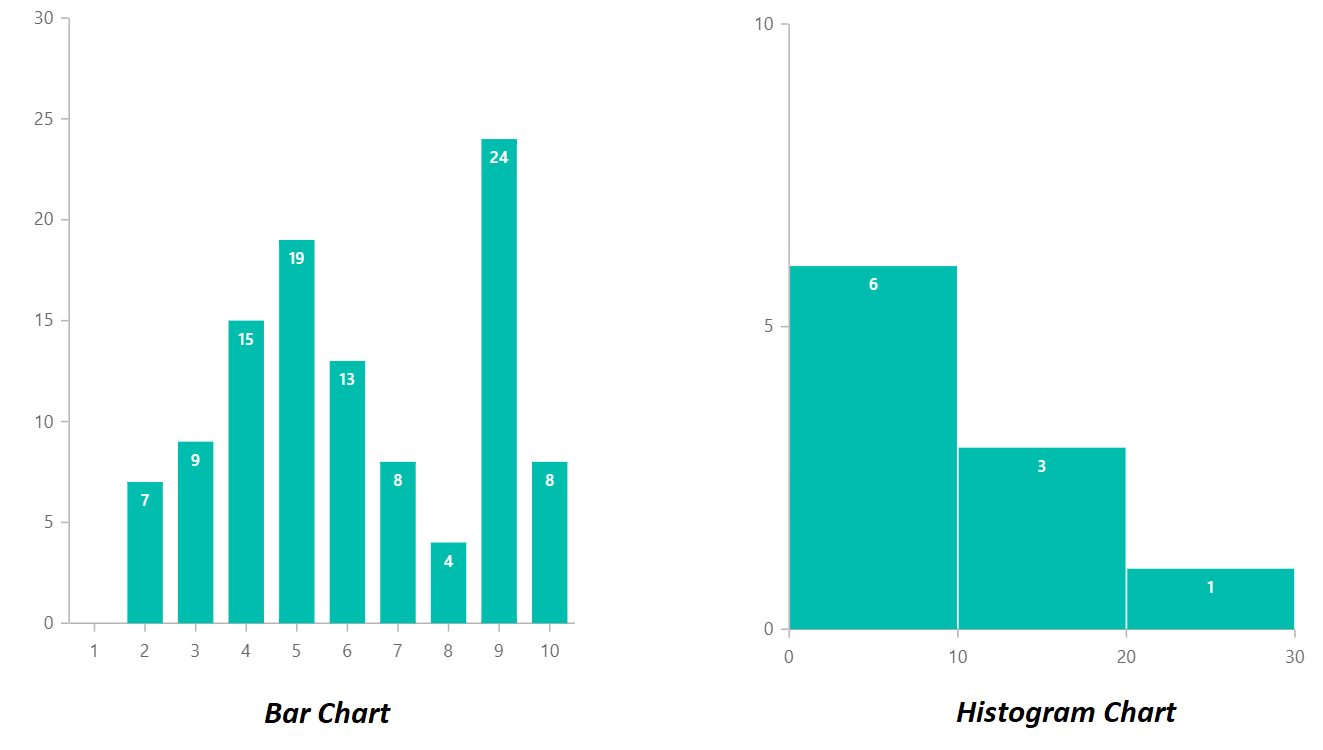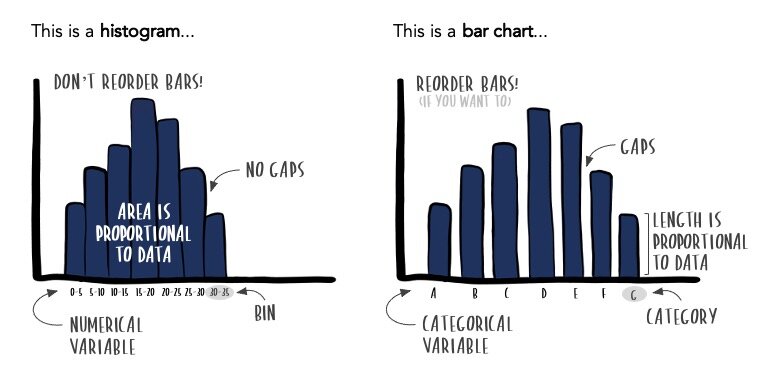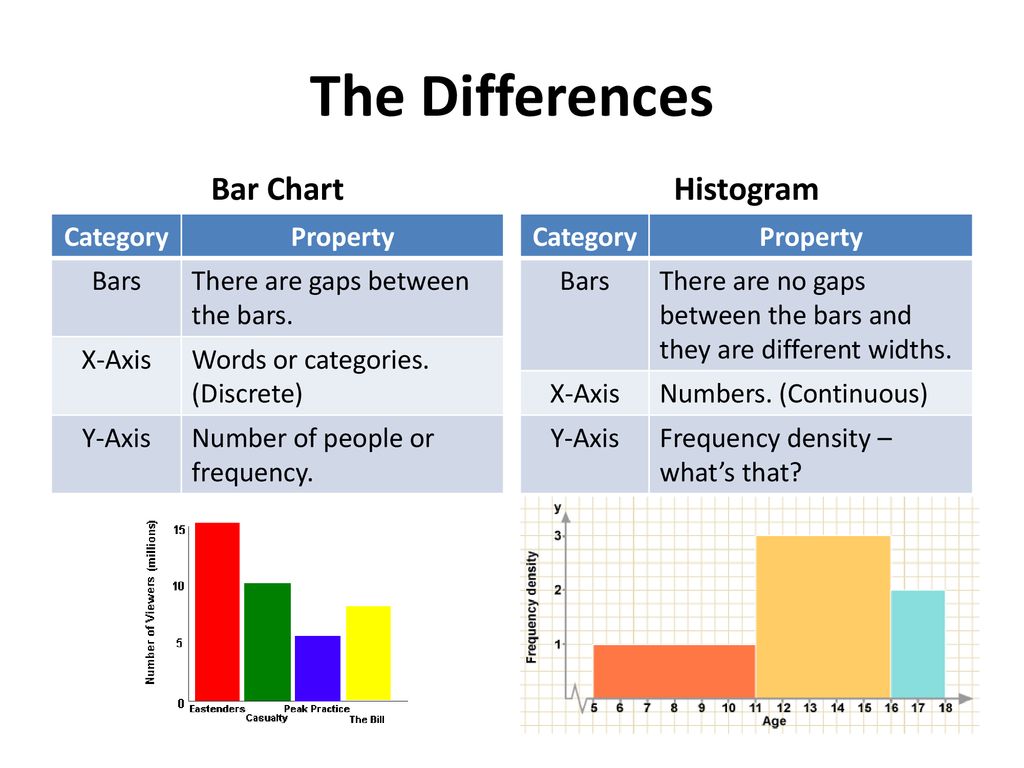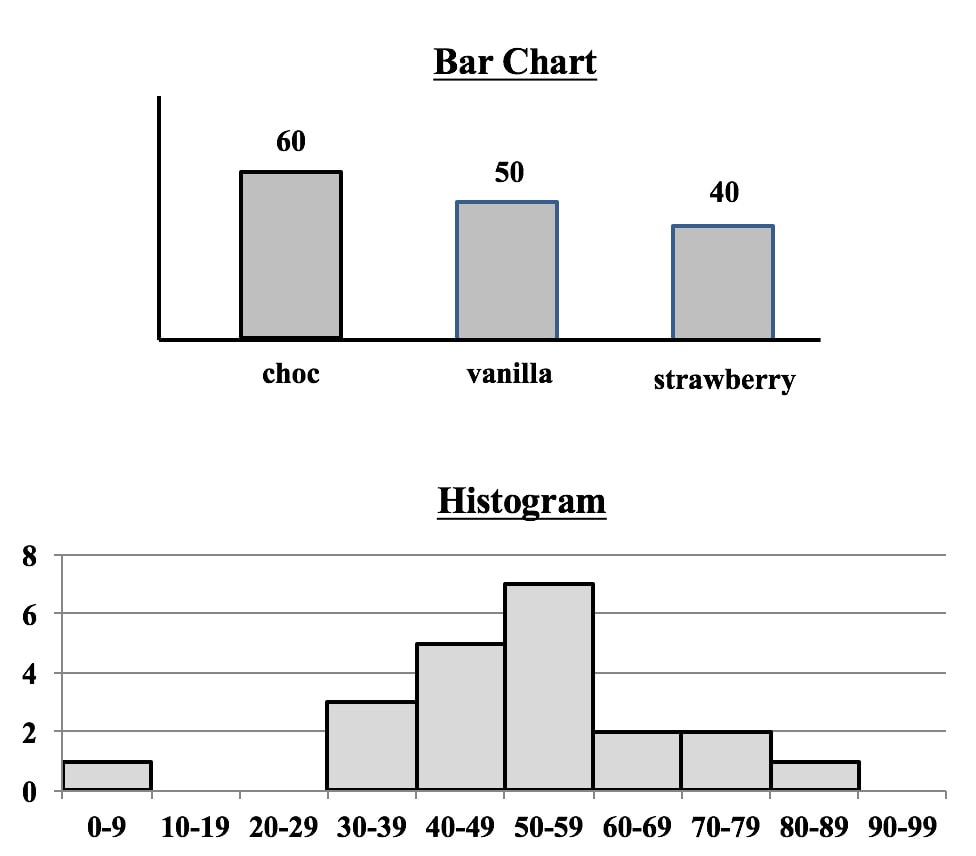What Is The Difference Between A Bar Chart And A Histogram?
A histogram is the graphical representation of data where data is grouped into continuous number ranges and each range corresponds to a vertical bar.
What is the difference between a bar chart and a histogram?. The Histogram refers to a graphical representation that shows data by way of bars to display the frequency of numerical data whereas the Bar graph is a graphical representation of data that uses bars to compare different categories of data. A Pareto chart is a special type of histogram that represents the Pareto philosophy the 8020 rule through displaying the events by order of impact. It is a graphical representation of data using bars which is of different heights.
The histogram represents numerical data whereas the bar graph represents categorical data. A histogram is the graphical representation of data. The Histogram refers to a graphical representation that shows data by way of bars to display the frequency of numerical data whereas the Bar graph is a graphical representation of data that uses bars to compare different categories of data.
The rectangular bars in a bar chart can be rearranged while the bins in a histogram follow a fixed order. The bars in a Bar Chart represent the value of a particular category. A bar graph is also called a bar chart.
A histogram is the graphical representation of data where data is grouped into continuous number ranges and each range corresponds to a. It is used to compare the frequencies of data ranges or values that are consecutive and do not overlap. Conversely a bar graph is a diagrammatic comparison of discrete variables.
Key differences between a bar graph and a histogram are. The histogram is drawn in such a way that there is no gap between the bars. We can represent end numbers of da.
A bar graph is the graphical representation of categorical data using rectangular bars where the length of each bar is proportional to the value they represent. The bins are not separated by gaps since the intervals are presented consecutively. Histogram presents numerical data whereas bar graph shows categorical data.
A histogram shows us the frequency distribution of continuous variables. Histograms are used to plot quantitative data with ranges of the data that are grouped into bins or intervals while bar charts plot categorical data. The difference between Bar Chart and Histogram is that histogram represents the frequency distribution of non-discrete series of variables whereas the bar chart represents the comparison of discrete variables.
The histogram is drawn in such a way that there is no gap between the bars. Conversely a bar graph is a diagrammatic comparison of discrete variables. A bar graph is the graphical representation of categorical data using rectangular bars where the length of each bar is proportional to the value they represent.
The columns in a bar chart on the other hand. Histograms and bar charts display different types of data. A histogram represents the frequency distribution of continuous variables.
Histogram presents numerical data whereas bar graph shows categorical data. Another notable difference between a bar chart and a histogram is the presence and the absence of gaps between the bars. In the bar chart each column represents the group which is defined by a categorical variable whereas in the histogram each column is defined by the continuous and quantitative variable.
Explain the difference between the histogram and bar charts. A bar graph is the graphical representation of categorical data using rectangular bars where the length of each bar is proportional to the value they represent. The difference between bar graph and histogram- Histograms are used to show distributions of variables while bar charts are used to compare variables.
A histogram is a bar graph that illustrates the frequency of an event occurring using the height of the bar as an indicator. It is used to compare distinct entities. What is the difference between histogram and bar graph.
In contrast a bar graph refers to a diagrammatic comparison of discrete variables. A histogram represents the frequency distribution of continuous variables.

